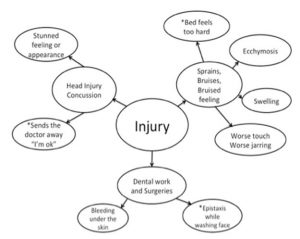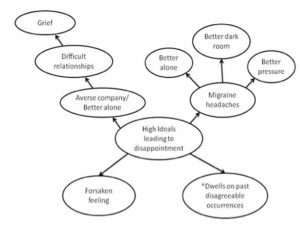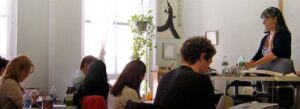The New York School of Homeopathy is a four year professional training program with a curriculum that weaves the teachings of Hahnemann and the early masters with the progressive ideas and clinical approaches of 21st-century homeopaths. NYSH was founded in 1990 by Robert Stewart; since 1998 it has been directed by Susan Sonz, who is also the principal instructor. The diploma program includes two years of classical homeopathy instruction, two years of clinical training, and is followed by post graduate work in the Graduate Apprentice Program (GAP clinic).
This project for HPATHY.com began as a special diploma project for Jiuan Heng and Birgit Kleinfeld, in June 2013. The project began in earnest in the fall of 2015 when Birgit and Jiuan began editing the articles for this issue. They have worked with outstanding professionalism and dedication, and it has been a real pleasure for me to work with them. We are all quite proud of this collection of remarkable cases.
-Susan Sonz, CCH, Director NYSH
Note: These two introductory articles explain the case-taking methods that we teach and use at the New York School of Homeopathy in order to find what we call the “true simillimum” for each individual patient. These methods not only help us select a remedy, they also help us learn materia medica and better understand our patients.
At the New York School of Homeopathy, I have found a unique way to teach homeopathic remedies by sharing my method of looking at the kingdoms, the groupings and the big ideas for each famous remedy. I like my students to understand the famous remedies from this point of view of big ideas and groupings in order to make it easier for them to memorize and understand homeopathic remedies, and then later on in clinic it helps them better understand the patients. So what does that mean? It means that first we try to understand the grouping or groupings that a remedy belongs to, and then we look at the big ideas/main symptoms of that remedy in order to better understand it.
Let’s use Arnica montana as an example.
First of all, Arnica montana is a plant, so as a member of the plant kingdom, we are likely to see the big ideas of that kingdom – mainly over-sensitivity and over-reaction issues. Arnica is also a member of the grouping of first-aid remedies, a grouping that is mostly made up of plant remedies. Arnica is a member of the compositae plant family. Most members of this plant family happen also to be first-aid remedies.
With this method, already we’ve learned that Arnica is a member of at least three different groupings. I hope you are starting to see that this method of studying remedies is quite accurate, and yet quite simple, too. Instead of being learned as random remedies, they become members of a kingdom and of one or more groupings, making them more memorable.
Using Circle Graphs to Remember Remedies
So, what are the big ideas of this remedy? In class we usually make what I call a “circle graph” on the board for each major remedy. The center circle is the biggest idea of the remedy – the point from which all other symptoms/ideas come. In the center circle for Arnica is INJURY. In other words, we ask, why do we use this remedy? We use this remedy when we get injured, right? So that means that the big idea for this remedy is in fact, INJURY. This remedy – our most famous of all the remedies – is all about injury and about how being injured makes one feel.
The big ideas that surround INJURY on the Arnica chart would be listed in circles that come off of the main circle:
sprains, bruises, bruised feeling,
- In a circle coming off of that is the keynote: *bed feels too hard….
- In another circle coming off this BRUISED circle is: ecchymosis
- Another circle off BRUISED is:swelling
- Another circle off BRUISED is: worse touch….. worse jarring…..
- In another circle off the main INJURY circle: dental work and surgeries, esp. where there is bleeding under the skin….
- In a circle coming off of that is the keynote: *Epistaxis while washing face
- In a circle off the main circle: head injury, concussion,
- In a circle coming off of this: stunned feelingor appearance….
- in a circle off of that is the keynote: *sends the doctor away….”I’m ok”
Of course, more can be said about all of these big ideas. With Arnica and other remedies, I like my students to try to imagine a person who might need one of these remedies in a chronic way. Arnica is a first-aid remedy, but what might a chronic Arnica look like? A bit stunned, perhaps – with a long history of injuries?
We always include the famous keynote, even if they seem to be unrelated to the big ideas, and we designate them with an *asterisk. (A keynote is a symptom that is so particular to that remedy that it almost belongs to that remedy.) The idea that “I’m ok!” in spite of an injury is so special to Arnica that it is a keynote.
You should be starting now to understand how we work on learning remedies in class. As I always tell my students, it gets easier and easier –and soon my students are making their own circle graphs on their homework.
Using Circle Graphs to Understand Patients
You can help yourself understand the big issues for a patient by making the same kind of circle graph. We all have a core issue, and our problems come out of that core issue. Sometimes a patient’s chief complaint is the core issue, but more often than not, the chief complaints come out of the core issue.
For instance, someone may come in with severe migraines. Rather than putting migraine headaches in the center circle, we try to understand the core issue of the patient. Perhaps that patient felt forsaken by her mother, and perhaps she never got the right kind of attention or care from her mother when she was a child, and perhaps everything in life since then has also felt like a disappointment. She has difficulty forming relationships, and once formed, she’s had trouble staying in them. She has high expectations, and so she often feels disappointed, especially in other people. “A mother should take care of you and be interested in you, but mine was bad at that, she was a narcissist. I remember when I was 12 she couldn’t even be bothered to come to an awards ceremony of mine. She said she was too busy with my little sister – what kind of a mother would do that?”
This patient’s hammering headaches go on for days, and she needs to stay alone in a dark room. If someone comes in to see how she is, she feels even worse and asks them to leave. A heavy cold compress over her eyes makes her feel a bit better. The most recent headache came on after sitting on a park bench with a co-worker on a sunny afternoon. She is often aggravated by the sun, particularly in the sun by the seashore.
If we were to make a chart for this woman, what would we put in the center? We could consider “forsaken,” but that is a rather vague emotional term. Instead, we could use “HIGH IDEALS LEADING TO DISAPPOINTMENT,” because the feeling of being forsaken (disappointed) probably comes from her high expectations of her relationships.
Out of there can be a circle: “forsaken feeling,” and another circle: “dwells on past disagreeable circumstances.”
From the core circle we can see another circle: “averse company/better alone,” and out of that one we can see a circle for: “difficult relationships,” from there we can make a circle for “grief” (the most famous symptom for this remedy).
Another circle off the core circle can be: “migraine headaches,” from there a circle: “better alone,” and one for: “better dark room,” one for:“better pressure.”
When we turn this circle graph that we made for the patient around, we are able to see a picture of a very famous remedy, Natrum muriaticum.
This is a simplified example that I’ve used to show how this method can go both ways; one way it helps you learn remedies, and used the other way, it helps you better understand the patient you are interviewing.
In our first two years at NYSH, we emphasize learning about kingdoms, groupings and remedies; after that we mostly shift to learning about how to understand the true issues of the patient, and how to match the patient to a remedy. Many homeopaths think it is more important to memorize the remedies, but I have learned that if you can truly understand the patient, the patient will somehow tell you the remedy. So at the New York School of Homeopathy, the emphasis is on the patient, not simply the memorization of materia medica, or the use of the repertory. Although it is also really important to learn your repertory and materia medica, we need a balance between gathering knowledge and being able to use that knowledge. Our system of looking at kingdoms, groupings and big ideas is only one way we learn homeopathy at NYSH. I explain some of the other methods that we use in the article “Case-taking Methods taught at NYSH”.
About the author
Susan Sonz has been the principal teacher and director of the New York School of Homeopathy since 1998, and she works and studies with many distinguished homeopaths in the international homeopathic community. She is very proud to be training excellent professional homeopaths through the undergraduate school at NYSH and the internship program called GAP (Graduate Apprentice Program).








Excelente artículo que nos aporta una gran ayuda didáctica para enseñar mejor la
Homeopatía.Gracias Dra.Susan Sonz.
Favor enviarme información referente a viculacion para estudiar con NYSH.